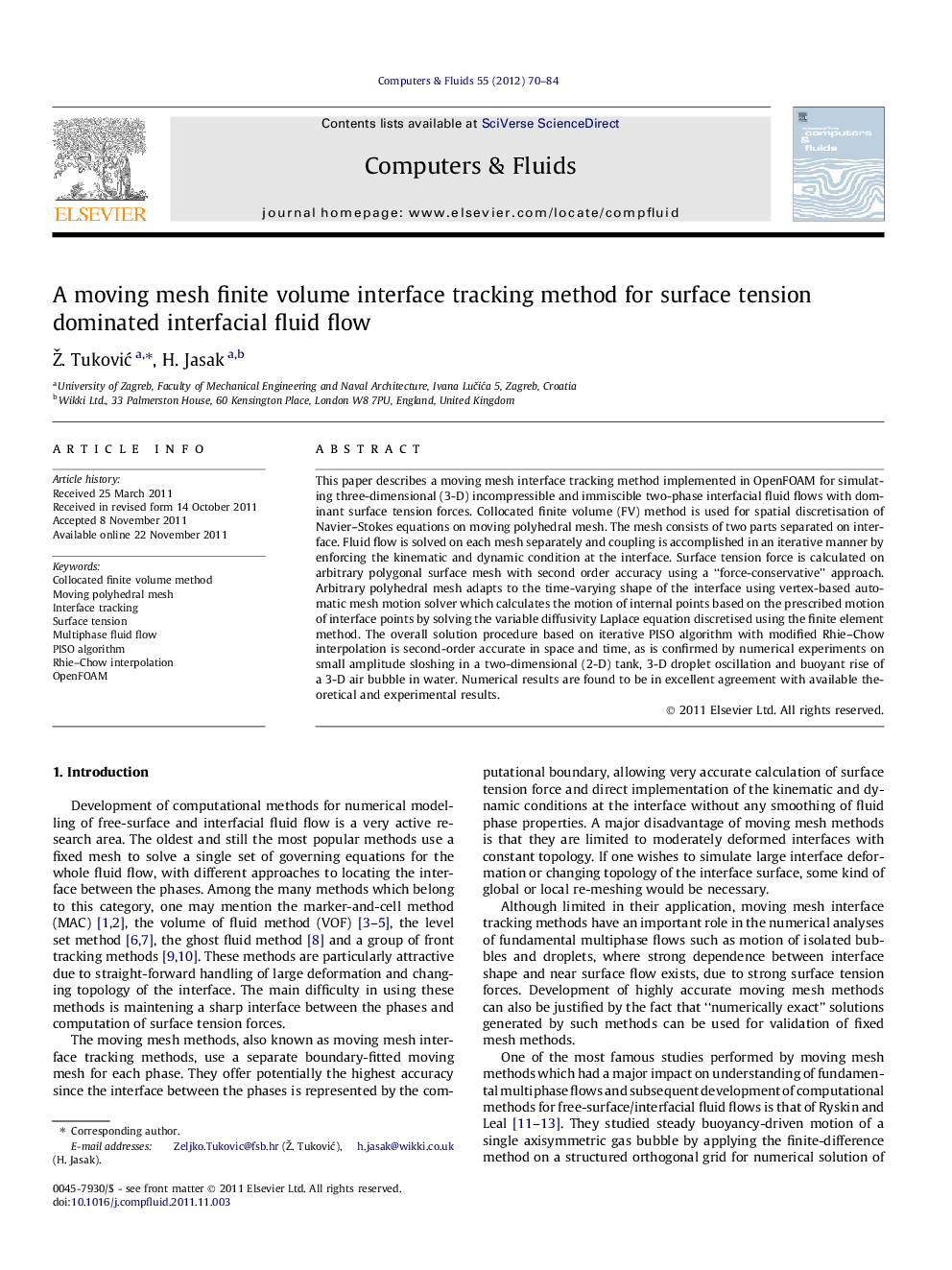| کد مقاله | کد نشریه | سال انتشار | مقاله انگلیسی | نسخه تمام متن |
|---|---|---|---|---|
| 756798 | 1462755 | 2012 | 15 صفحه PDF | دانلود رایگان |

This paper describes a moving mesh interface tracking method implemented in OpenFOAM for simulating three-dimensional (3-D) incompressible and immiscible two-phase interfacial fluid flows with dominant surface tension forces. Collocated finite volume (FV) method is used for spatial discretisation of Navier–Stokes equations on moving polyhedral mesh. The mesh consists of two parts separated on interface. Fluid flow is solved on each mesh separately and coupling is accomplished in an iterative manner by enforcing the kinematic and dynamic condition at the interface. Surface tension force is calculated on arbitrary polygonal surface mesh with second order accuracy using a “force-conservative” approach. Arbitrary polyhedral mesh adapts to the time-varying shape of the interface using vertex-based automatic mesh motion solver which calculates the motion of internal points based on the prescribed motion of interface points by solving the variable diffusivity Laplace equation discretised using the finite element method. The overall solution procedure based on iterative PISO algorithm with modified Rhie–Chow interpolation is second-order accurate in space and time, as is confirmed by numerical experiments on small amplitude sloshing in a two-dimensional (2-D) tank, 3-D droplet oscillation and buoyant rise of a 3-D air bubble in water. Numerical results are found to be in excellent agreement with available theoretical and experimental results.
► Moving mesh finite volume interface tracking method is implemented in OpenFOAM.
► We consider two-phase incompressible fluid flows with dominant surface tension forces.
► Surface tension force is calculated using novel “force-conservative” approach.
► Iterative PISO solution procedure used with modified Rhie–Chow interpolation.
► Evaluation showed second-order accuracy in space and time.
Journal: Computers & Fluids - Volume 55, 15 February 2012, Pages 70–84